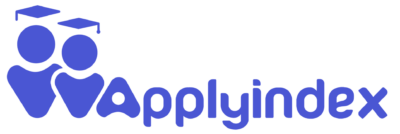PhD position – Aquatic collective motions across Reynolds numbers
Position Details (PhD Program)
From planktonic species (a few micrometers in size) to large mammals (up to several meters), the movements of aquatic organisms span a wide range of length and time scales. Their individual and collective movements as well as their intra- and interspecific mutual interactions have significant ecological and environmental impacts [Pavlov & Kasumyan 2000].
Several social models[1] have yielded good results in predicting fish school behaviors depending on their cognitive mutual interactions (i.e. perception/action), modeled by social forces[2]. While these social approaches apprehend the structures of schools of fish as the result of internal social life or interactions with their environment[3] (conspecifics, predators, prey, obstacles, food), another idea has regularly been put forward by hydrodynamicists, claiming that fish could benefit from schooling behavior from a perspective of locomotion efficiency. The question that remains open in biology is to be able to estimate the relative importance of cognitive — versus hydrodynamic — positioning within the school.
While, it has been shown experimentally that the hydrodynamic drag is drastically reduced within a school[4], which allows the fish to save energy, the role of hydrodynamic sensing or cognitive interaction in achieving this drag reduction cannot be directly assessed from observations. Hydrodynamic simulations go in similar directions but are generally restricted to configurations with fixed given geometries, e.g. tandems, phalanx or diamonds[5]. As such, these static hydrodynamics approaches cannot compare the relative importance of social forces and hydrodynamic forces: compound models describing the formation dynamics of schools of fish are still lacking.
The goal of this project is to couple dynamical models of cognitive behavior with full hydrodynamics computation at large Reynolds numbers (up to The PhD will be carried out between three labs located on the Grenoble Campus:
- TheLIPhy laboratory, which has an expertise in physics at the interface with other disciplines such as life or environmental sciences, mechanics or applied mathematics.
- ELAN at INRIA Grenoble, which has an expertise in the numerical modeling and simulation of physical systems, working at the interface between applied mathematics, computer science, mechanics and physics.
- LEGI, which has an expertise in fluid mechanics and its application to environmental science, industrial systems or health sector.
The student will be administratively hosted at LIPhy, but will work in close collaboration with the other involved labs. The PhD position also includes a two-month research stay at the University of Genoa, in Agnese Seminara’s group.
The PhD will be supervised by Philippe Peyla (LIPhy, MoVe Team), Thibaut Métivet (INRIA Grenoble, ELAN Team) and Guillaume Balarac (LEGI, MOST Team).
This recruitment takes place within the PhD@Tec21 Programme, which is co-funded as part of the Marie Skłodowska-Curie COFUND actions under the grant agreement #101217261. The recruitment process follows a specific selection and evaluation procedure with particular eligibility criteria, all of which are detailed in the applicant guide available onPhD@Tec21 Website.
Aquatic collective motions across Reynolds numbers
The project focuses on understanding the dynamics of aquatic organisms, focusing in particular on how hydrodynamic forces and cognitive – or social – behavior combine to influence their collective movement. By studying fish schools, the project seeks to uncover how individual movements, social interactions, and fluid dynamics contribute to the formation and organization of these schools. Current research offers insights into either social or hydrodynamic forces, but lacks a comprehensive model that integrates both aspects.
An individual fish model has already been developed, providing a validated framework that will serve as the foundation for the present project[6]. The goal is to bridge this gap by developing advanced numerical methods to couple social behavior with full hydrodynamic simulations of the Navier–Stokes equations. This represents a novel approach that has been poorly explored in the scientific literature. The project also includes a two-month research stay at the University of Genoa within Agnese Seminara’s group, fostering collaboration and exchange on fluid–structure interaction modeling. The breakthrough is expected to come from the ability to simulate realistic fish schools in 3D and at various Reynolds numbers, examining how hydrodynamic and social forces compete or complement each other. This could provide critical insights not only in biology but also for applications in robotics, engineering, and environmental modeling.
- Hydrodynamic interactions among individuals: quantify how the wake or vortices generated by one fish affect its neighbors.
- Transition between social and hydrodynamic dominance: identify key parameters (Reynolds number, spacing, velocity) that dictate which type of interaction prevails.
- Effect of limited perception: investigate how visual or hydrodynamic sensing constraints influence group cohesion and stability.
- Energetic optimization: determine whether and how collective swimming configurations reduce individual energy expenditure.
- Efficient coupled CFD algorithms: develop computationally efficient solvers capable of simulating large groups of interacting swimmers.
Philippe Peyla (UGA), Thibaut Métivet (INRIA), Guillaume Balarac (UGA)Fluid mechanics, Numerical modeling and simulation, Active matterDept. of Civil, Chemical and Environmental Engineering (DICCA) at University of Genoa, ItalyED PHYS: Physics
Candidates should hold a Master’s degree (or equivalent) in Physics, with a strong background in one or more of the following fields:
- Fluid mechanics
- Soft-matter physics, with knowledge of active matter and/or collective motion
- Numerical modeling of physical systems.
Strong analytical skills, and some experience in C/C++ development are essential. Interest in interdisciplinary research, with the ability to work across physical modeling and computer science will be considered an advantage.
The project requires autonomy, and adaptability to multidisciplinary challenges, good organization and time management abilities. Strong communication skills to collaborate with the different research teams involved are also important. Candidate’s key assets for success in this project are strong scientific curiosity and motivation to work at the interface of physics and applied mathematics/numerical simulations, together with a proactive attitude, perseverance, and openness to learning new methods. The candidate should be capable of working independently and creatively, with excellent analytical and problem-solving skills and a high scientific discipline and reporting.
Université Grenoble Alpes (UGA) is offering a 36-month full-time work contract. In line with the European Commission rules for Marie Skłodowska-Curie grant holders, the remuneration will consist of a gross monthly salary of 2,669 EUR. The estimated net salary to be perceived by the PhD fellow will be between 2,050 and 2,152 EUR[7].
Benefits include:
- Access to a high-quality work environment, including a personal computer, scientific equipment and access to library and shared lab facilities
- Full social security benefits and participation to health insurance
- Access to high-level scientific and inter-sectoral training through 120 hours of doctoral courses and workshops
- Opportunity for 2-month secondments at an academic institution or industrial partner during the 2nd year of the PhD
- A vast choice of networking events and activities within the PhD@Tec21 Programme and through the international network of MSCA fellows
- Access to the UGA International Student Office, to assist the PhD fellows in searching for accommodation in Grenoble and support with administrative issues including visas, health, bank accounts, etc.
- Visa fees and registration to the UGA Doctoral School are covered by PhD@Tec21
- Sick leave, parental leave, 45 days of paid holidays
Contact for the questions related to the position:
PhD@Tec21 Management Board: [emailprotected] / [emailprotected]
[1] Calovi, D. S., Lopez, U., Ngo, S., Sire, C., Chaté, H., & Theraulaz, G. (2014). Swarming, schooling, milling: phase diagram of a data-driven fish school model. New journal of Physics, 16(1), 015026.
Calovi, D. S., Litchinko, A., Lecheval, V., Lopez, U., Pérez Escudero, A., Chaté, H., … & Theraulaz, G. (2018). Disentangling and modeling interactions in fish with burst-and-coast swimming reveal distinct alignment and attraction behaviors.PLoS computational biology, 14(1), e1005933.
Gautrais, J., Ginelli, F., Fournier, R., Blanco, S., Soria, M., Chaté, H., & Theraulaz, G. (2012).Deciphering interactions in moving animal groups.
[2]Helbing, D., & Molnar, P. (1995). Social force model for pedestrian dynamics. Physical review E, 51(5), 4282.
Vicsek, T., Czirók, A., Ben-Jacob, E., Cohen, I., & Shochet, O. (1995). Novel type of phase transition in a system of self-driven particles. Physical review letters, 75(6), 1226.
[3]Pavlov, D. S., & Kasumyan, A. O. (2000). Patterns and mechanisms of schooling behavior in fish: a review. Journal of Ichthyology, 40(2), S163.
[4]Ashraf, I., Godoy-Diana, R., Halloy, J., Collignon, B., & Thiria, B. (2016). Synchronization and collective swimming patterns in fish (Hemigrammus bleheri). Journal of the Royal Society Interface, 13(123), 20160734.
Weihs, D. (1973). Hydromechanics of fish schooling. Nature, 241(5387), 290-291.
[5]Deng, J., Shao, X. M., & Ren, A. L. (2006). Numerical study on propulsive performance of fish-like swimming foils. Journal of Hydrodynamics, 18(6), 681-687.
Oza, A. U., Ristroph, L., & Shelley, M. J. (2019). Lattices of hydrodynamically interacting flapping swimmers. Physical Review X, 9(4), 041024.
Li, S., Li, C., Xu, L., Yang, W., & Chen, X. (2019).Numerical simulation and analysis of fish-like robots swarm.Applied Sciences, 9(8), 1652.
[6]Ventéjou, B., Métivet, T., Dupont, A., & Peyla, P. (2025).Universal Scaling Laws for a Generic Swimmer Model. Physical Review Letters, 134(13), 134002.
[7] As an average over the 3 years, depending on French tax regulations.Fellows might benefit from an additional allowance depending on their family situation (74 EUR monthly net allowance)


